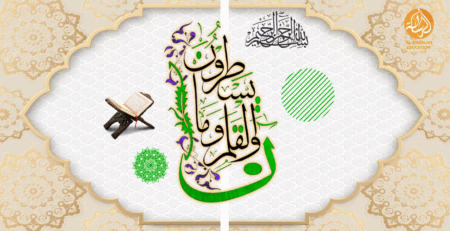The Islamic and Mughal Arts: A Journey Through Time
Introduction to Islamic and Mughal Arts
Islamic art is a rich and diverse form of artistic expression that spans centuries and continents. It encompasses a wide range of artistic styles and techniques, all unified by their adherence to the principles of Islam. On the other hand, Mughal art refers to the artistic traditions that flourished in the Indian subcontinent during the reign of the Mughal emperors. While both forms of art share certain characteristics, they also exhibit distinct features that reflect their respective cultural and historical contexts.
Characteristics of Islamic Art
Calligraphy
One of the most prominent features of Islamic art is the use of calligraphy. Arabic script, the sacred language of Islam, is often transformed into intricate and decorative forms that adorn various artworks, including manuscripts, ceramics, and architectural elements. Calligraphy is not only a means of conveying written messages but also a form of artistic expression that is highly revered in Islamic culture.
Geometric Patterns
Another hallmark of Islamic art is the use of geometric patterns. These intricate designs are often based on mathematical principles and can be found in a wide range of artistic mediums, from textiles and pottery to architecture and decorative arts. Geometric patterns symbolize the harmony and order inherent in the universe, reflecting the Islamic belief in the unity of all creation.
Arabesque Designs
Arabesque designs, characterized by their flowing, interlacing motifs, are also prevalent in Islamic art. These organic forms often incorporate elements of nature, such as leaves, vines, and flowers, and are used to decorate a variety of surfaces, including walls, ceilings, and manuscripts. Arabesque designs evoke a sense of fluidity and movement, representing the dynamic nature of life and the interconnectedness of all things.
Influence of Islamic Art on Mughal Art
The Mughal Empire, which ruled over much of the Indian subcontinent from the 16th to the 19th centuries, was heavily influenced by Islamic culture and art. The Mughal emperors, who were descendants of the Central Asian Timurids, brought with them a rich artistic tradition that blended elements of Persian, Turkish, and Indian art.
Introduction of Islamic Art in the Indian Subcontinent
The Mughal emperors were great patrons of the arts, and they actively promoted the integration of Islamic artistic techniques and styles into their own cultural milieu. With the establishment of the Mughal Empire in the Indian subcontinent, Islamic art found fertile ground for further development and innovation. Artists and craftsmen from Persia, Central Asia, and other regions were invited to the Mughal courts, where they shared their expertise and contributed to the flourishing of artistic production.
Integration of Islamic Elements into Mughal Art
The influence of Islamic art on Mughal art can be seen in various aspects of Mughal culture, including architecture, painting, and decorative arts. Mughal architecture, for example, bears striking similarities to Islamic architectural styles, such as the use of domes, arches, and minarets. The Taj Mahal, one of the most iconic monuments of the Mughal era, is a testament to the fusion of Islamic and Indian architectural traditions.
Evolution of Mughal Art
Early Mughal Period
During the early years of the Mughal Empire, art and culture flourished under the patronage of emperors such as Babur and Akbar. The art of this period was characterized by its synthesis of Persian and Indian influences, resulting in a unique aesthetic that reflected the cosmopolitan nature of the Mughal court.
High Mughal Period
The high Mughal period, which coincided with the reigns of emperors like Akbar, Jahangir, and Shah Jahan, witnessed a golden age of artistic achievement. Miniature painting reached new heights of sophistication and refinement, with artists creating exquisite works that depicted scenes from court life, literature, and mythology. The Mughal rulers were also avid patrons of architecture, commissioning grand monuments and palaces adorned with intricate carvings, inlay work, and decorative motifs.
Late Mughal Period
By the late Mughal period, the empire began to decline, and with it, the patronage of the arts waned. However, even in this period of political upheaval and economic uncertainty, Mughal artists continued to produce remarkable works of art. While the style of Mughal art evolved over time, its core principles remained intact, showcasing the enduring legacy of Islamic artistic traditions in the Indian subcontinent.
Key Features of Mughal Art
Miniature Paintings
Miniature painting was one of the most distinctive forms of artistic expression during the Mughal era. Artists meticulously crafted intricate scenes on small-scale canvases using delicate brushes and vibrant pigments. These paintings often depicted…
Architecture
Mughal architecture is renowned for its grandeur and elegance. Emperors such as Akbar, Jahangir, and Shah Jahan commissioned the construction of magnificent palaces, mosques, and mausoleums adorned with intricate marble carvings, delicate filigree work, and elaborate domes. The Taj Mahal, built by Shah Jahan in memory of his beloved wife Mumtaz Mahal, is a prime example of Mughal architectural splendor.
Decorative Arts
In addition to painting and architecture, Mughal artisans excelled in a variety of decorative arts, including…
Impact of Mughal Art on Indian Culture
Integration of Persian and Indian Elements
Mughal art played a significant role in shaping the cultural landscape of the Indian subcontinent by blending Persian and Indian artistic traditions. The fusion of these diverse influences resulted in the creation of a unique artistic aesthetic that reflected the cosmopolitan ethos of the Mughal Empire.
Influence on Later Indian Art Movements
The legacy of Mughal art extends beyond the Mughal period itself, influencing subsequent artistic movements in India. Elements of Mughal art can be seen in various Indian art forms, including…
Comparison between Islamic and Mughal Arts
Similarities
While Islamic and Mughal arts are distinct in many ways, they also share certain similarities. Both traditions place a strong emphasis on…
Differences
Despite their shared cultural heritage, Islamic and Mughal arts exhibit notable differences in terms of…
Significance of the Jameel Gallery
The Jameel Gallery, located at [location], serves as a testament to the rich artistic heritage of both Islamic and Mughal cultures. The gallery houses a diverse collection of artifacts, including…
Collection of Islamic and Mughal Artifacts
The Jameel Gallery boasts an extensive collection of Islamic and Mughal artifacts, ranging from…
Role in Preserving Cultural Heritage
By showcasing these precious artifacts to the public, the Jameel Gallery plays a crucial role in preserving…
Conclusion
In conclusion, the Islamic and Mughal arts represent two distinct yet interconnected strands of artistic expression that have profoundly influenced the cultural landscape of the Indian subcontinent. From the intricate calligraphy of Islamic manuscripts to the majestic architecture of Mughal monuments, these artistic traditions continue to inspire awe and admiration…
FAQs (Frequently Asked Questions)
- What distinguishes Mughal art from other artistic traditions in India?
- How did Islamic art influence the development of Mughal art?
- What are some key examples of Mughal architectural masterpieces?
- How did the decline of the Mughal Empire impact artistic production in India?
- What role does the Jameel Gallery play in preserving Islamic and Mughal cultural heritage?












Leave a Reply